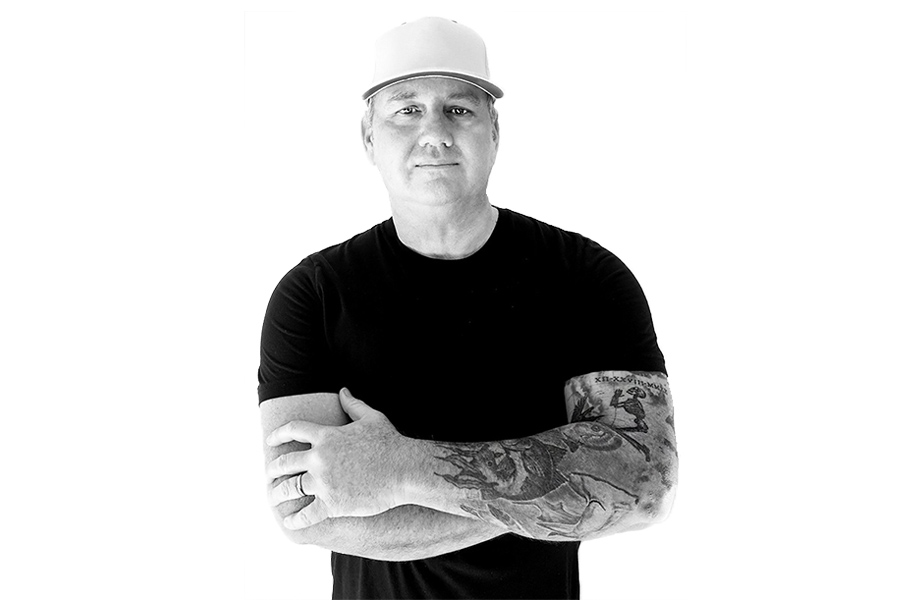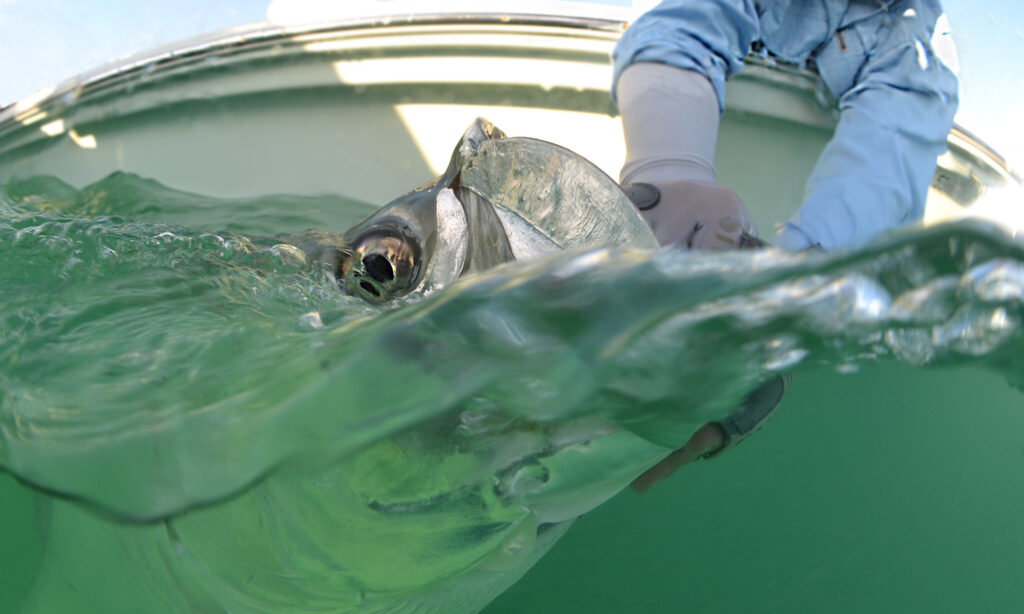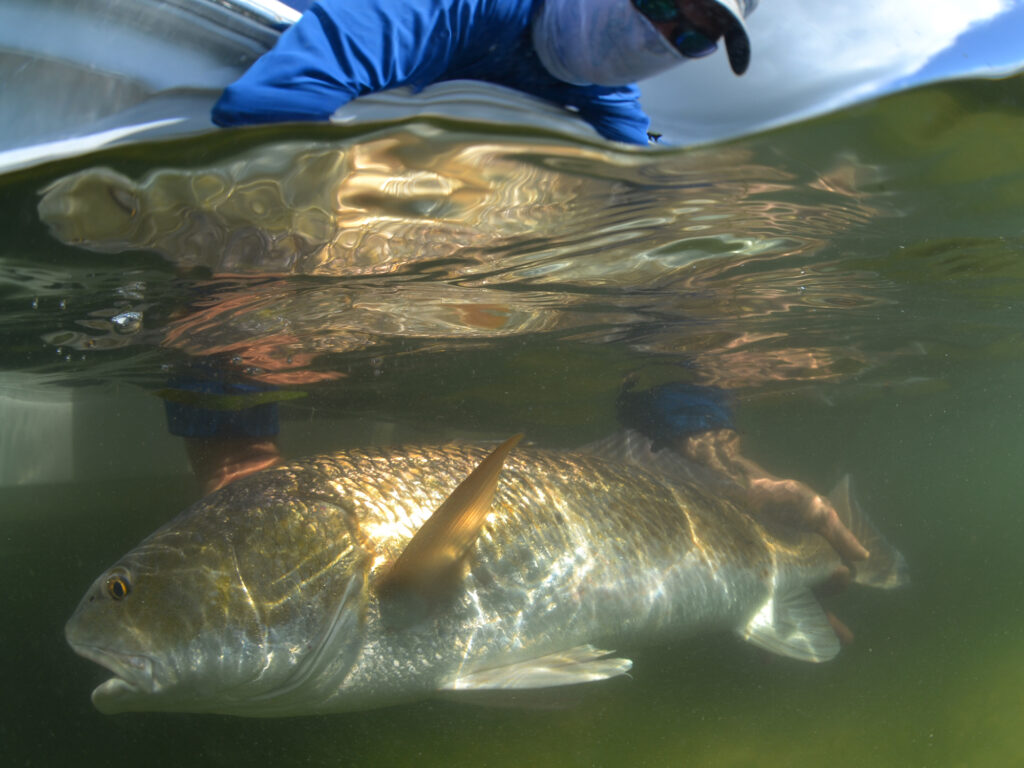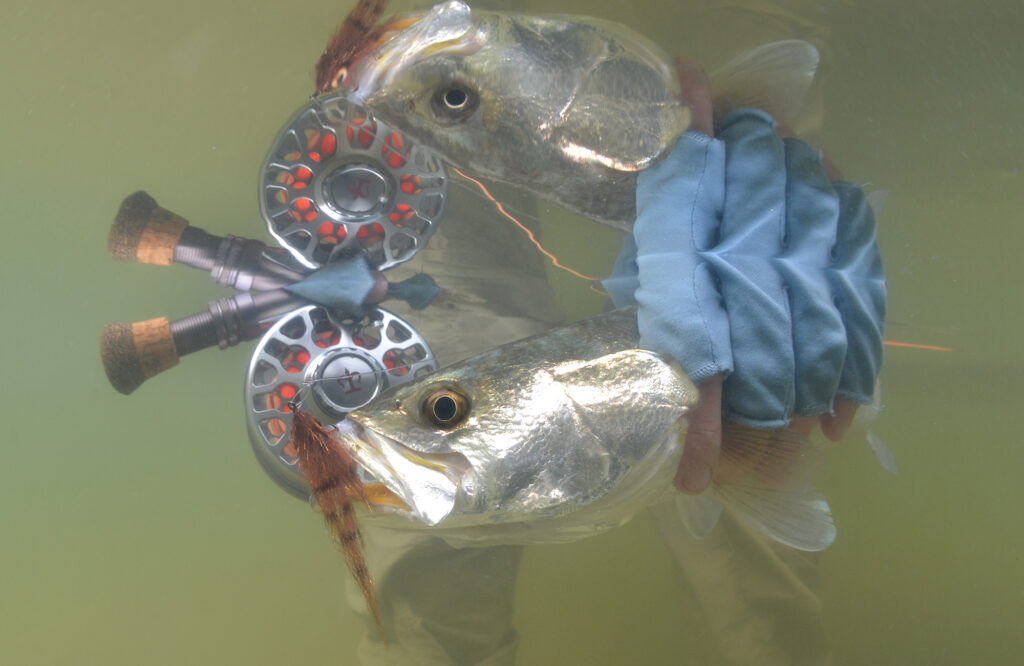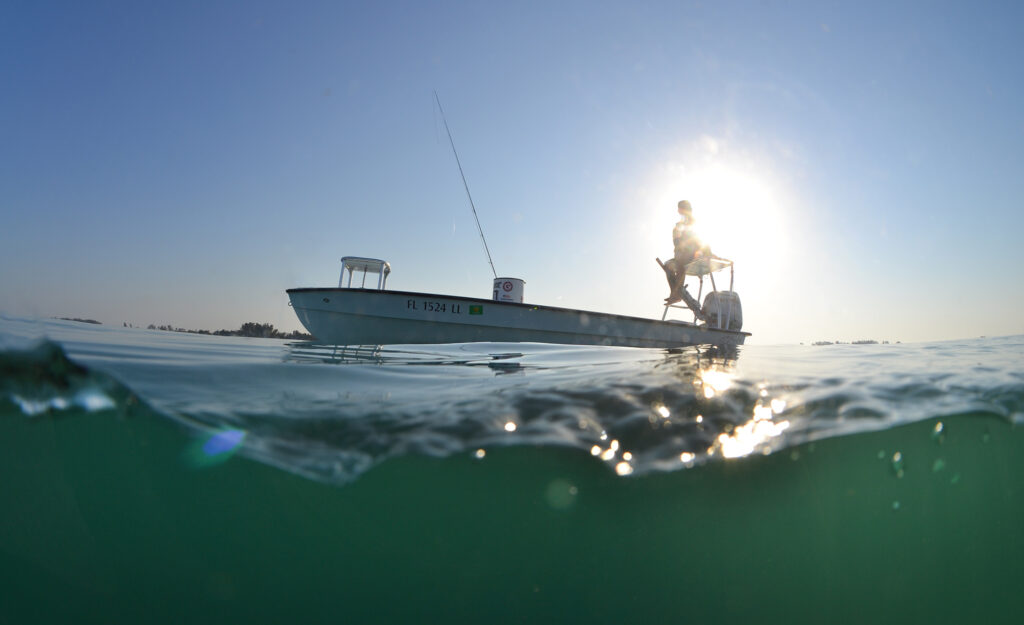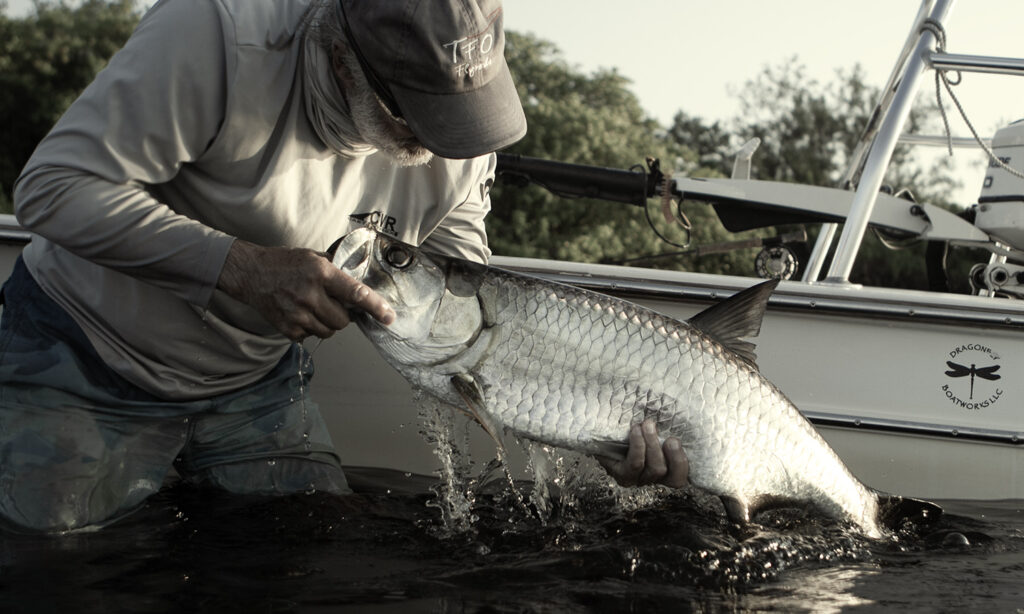Fly Fishing Photography Gallery
Fly fishing photography of Boca Grande captures the beauty of the sport and nature. Good lighting makes photos look more vibrant and clearer. Early morning and late afternoon provide the best natural light.
Use a fast shutter speed to freeze the action. A waterproof camera helps when shooting near or in the water. Focus on the fish, the angler, and the surroundings. Close-up shots highlight details like the fly, the reel, and water droplets. Wide shots show the full scene and environment. Keep the horizon straight for balanced compositions. Avoid harsh shadows by using soft, even lighting.
Polarized lenses reduce glare and improve clarity. Experiment with different angles for unique perspectives. Try underwater shots for a fresh look. Capture emotions like excitement and surprise. Always respect the fish and handle it gently. Be patient and wait for the perfect moment. Practice often to improve your skills. Enjoy the process and have fun!
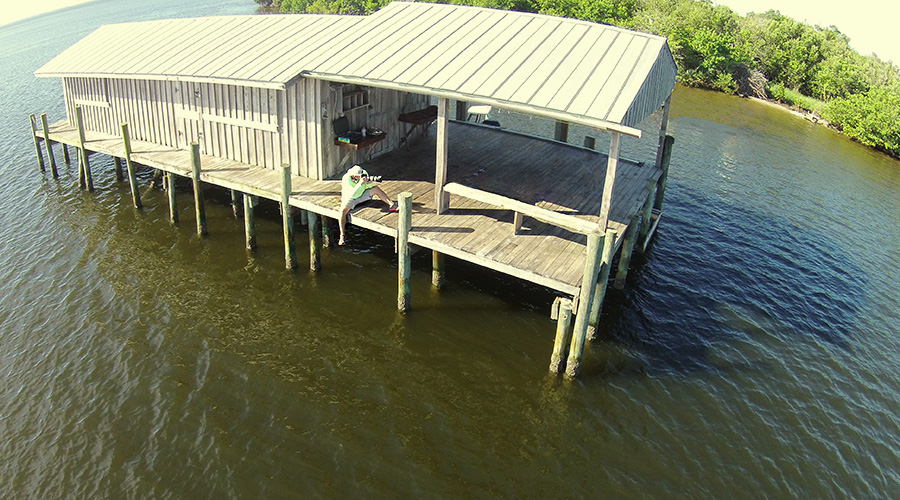

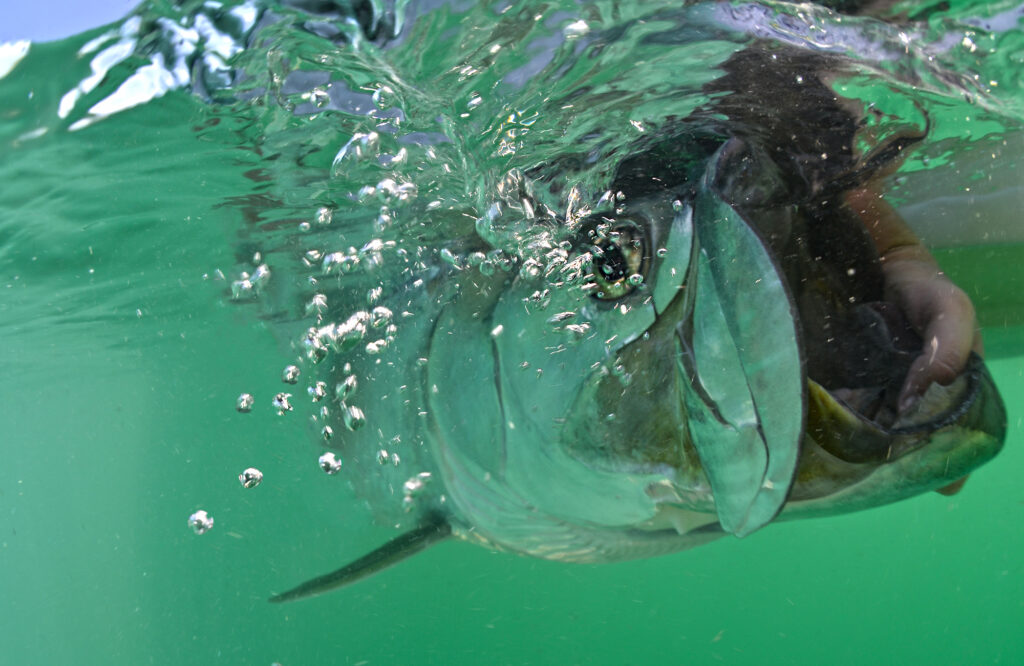
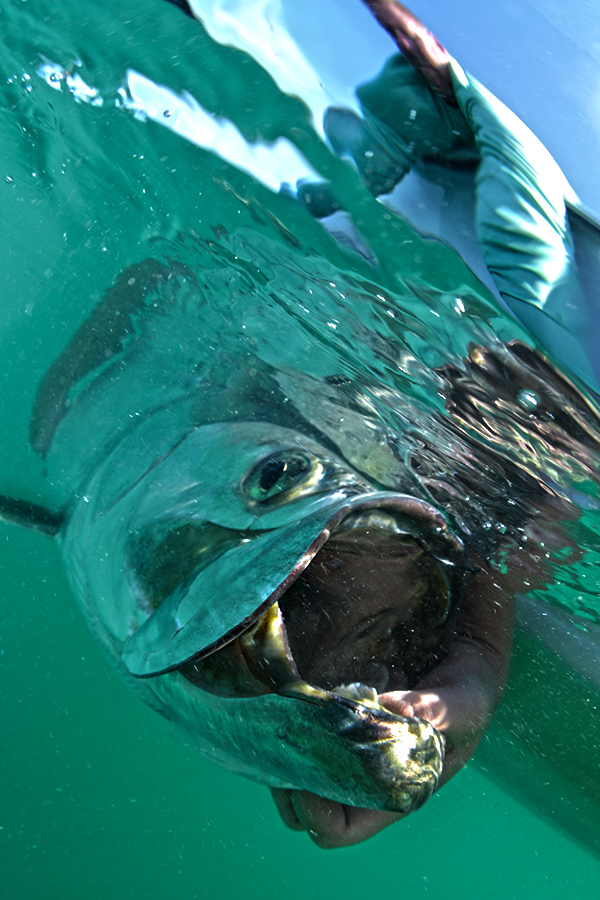

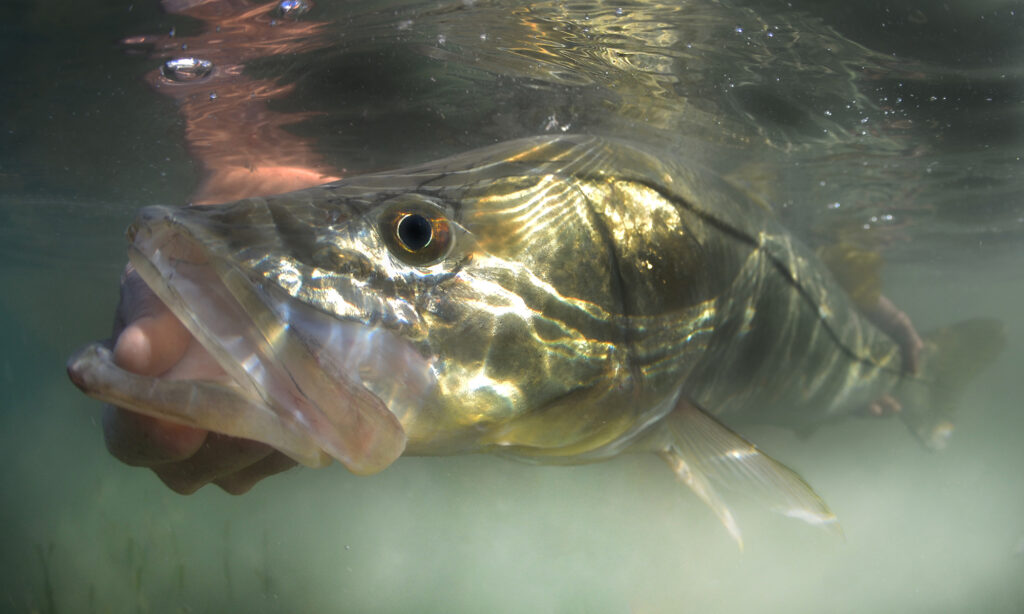
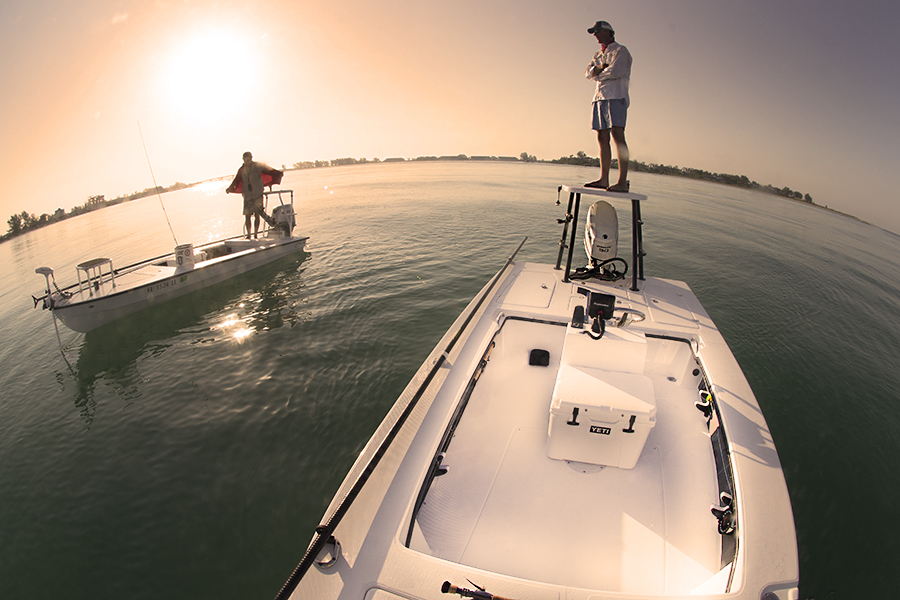

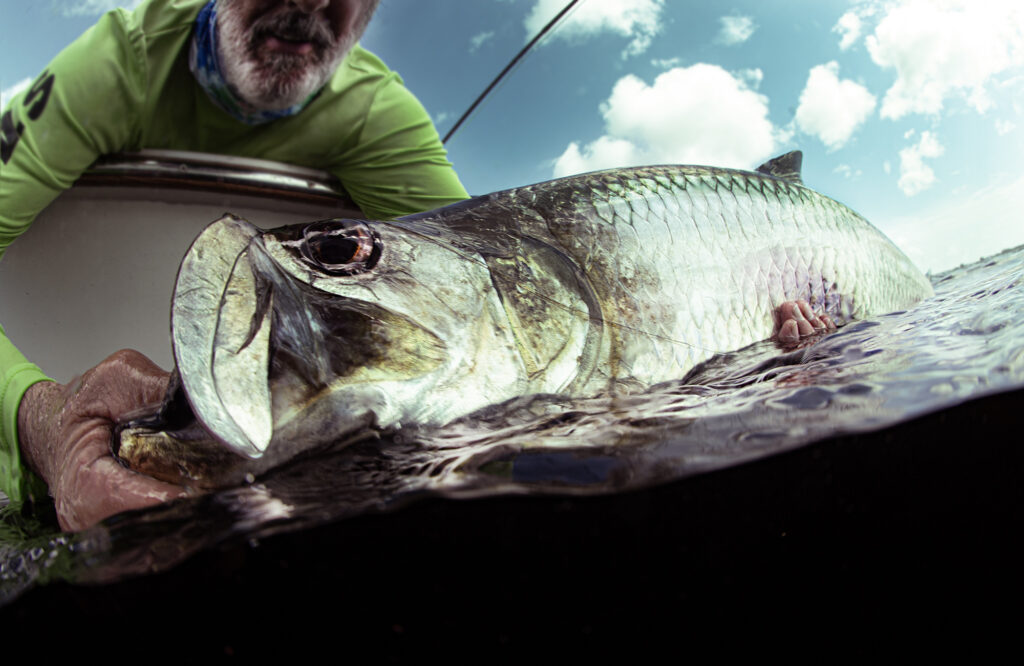

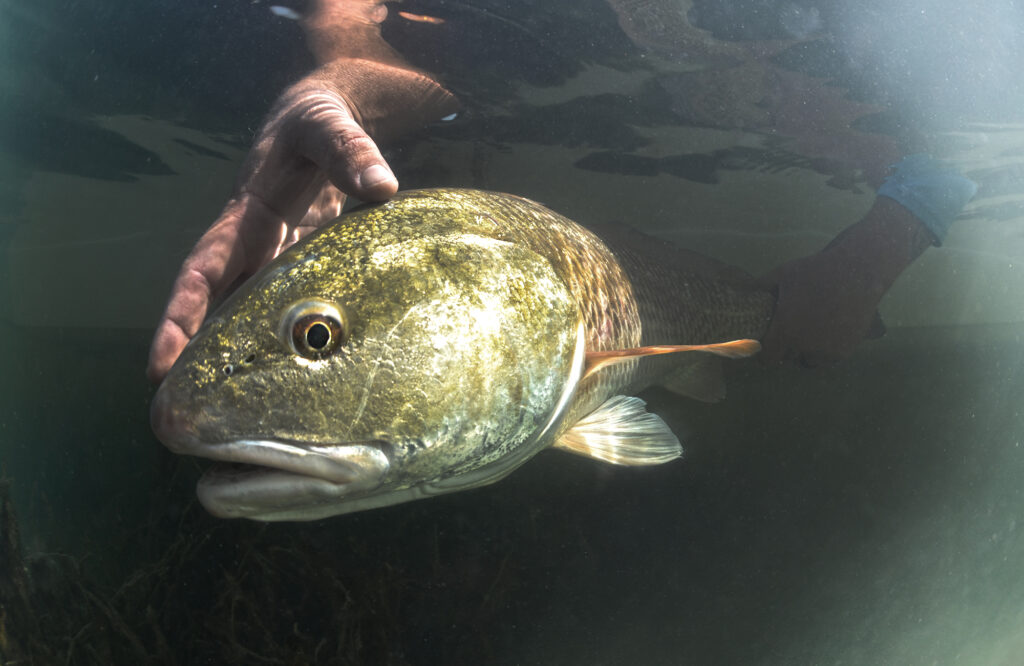
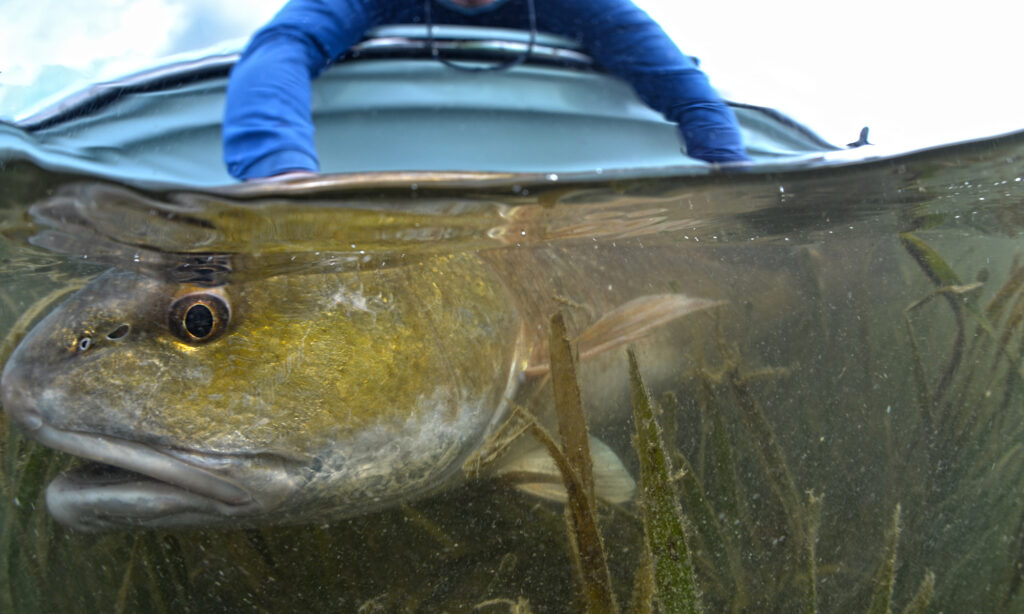
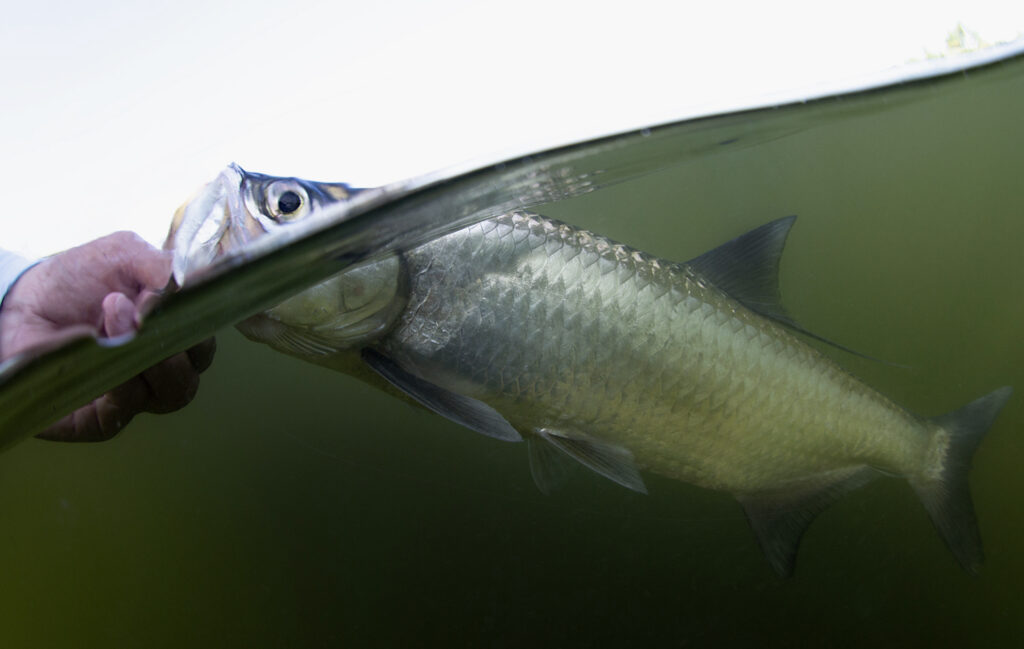
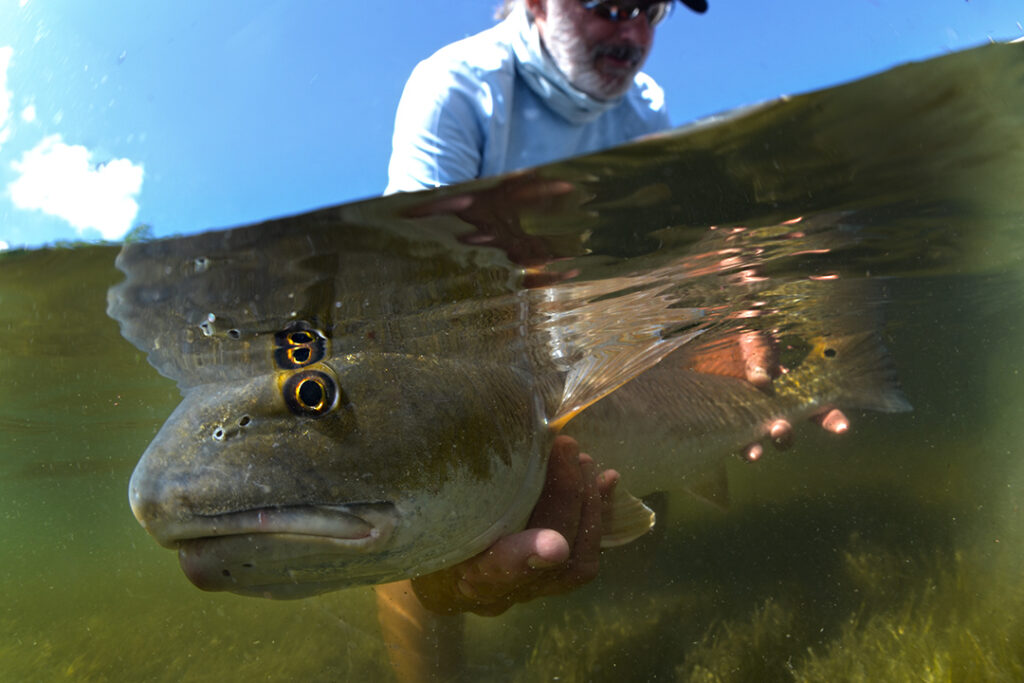

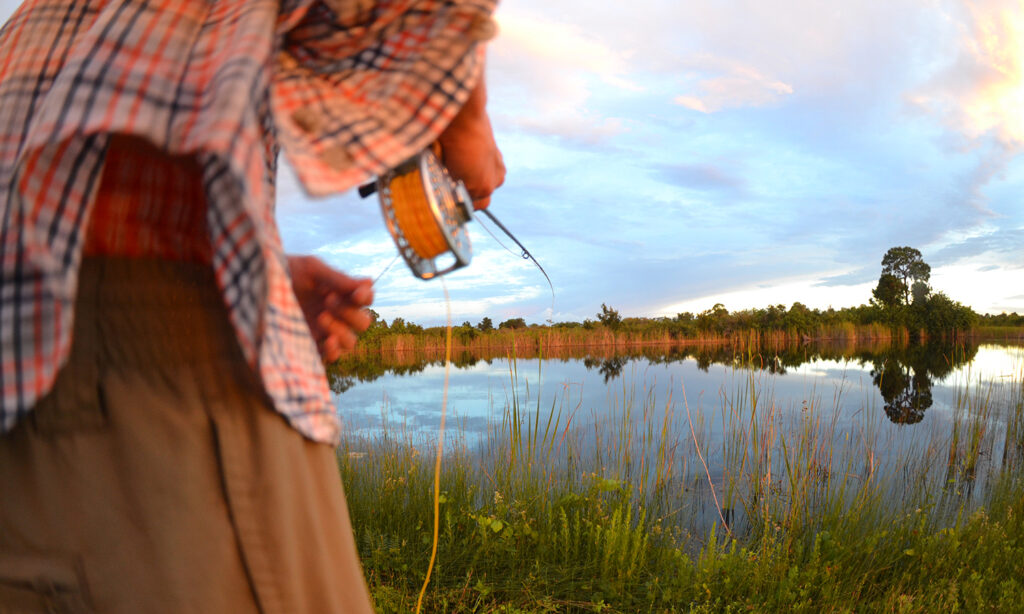
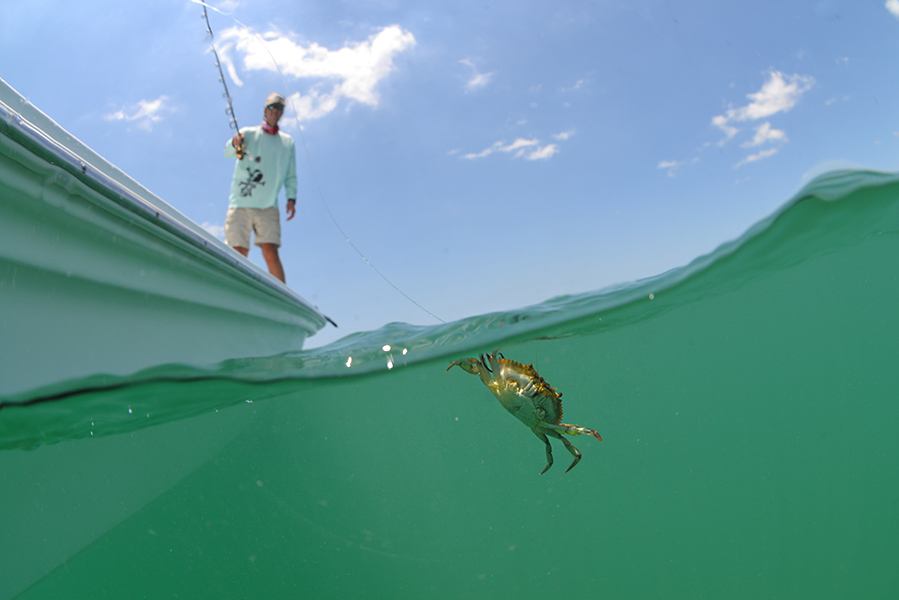
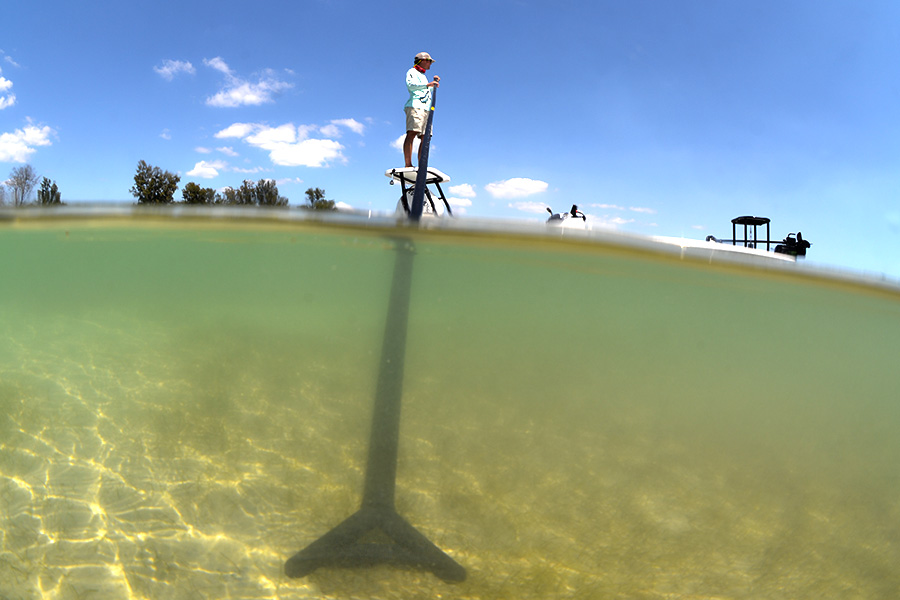
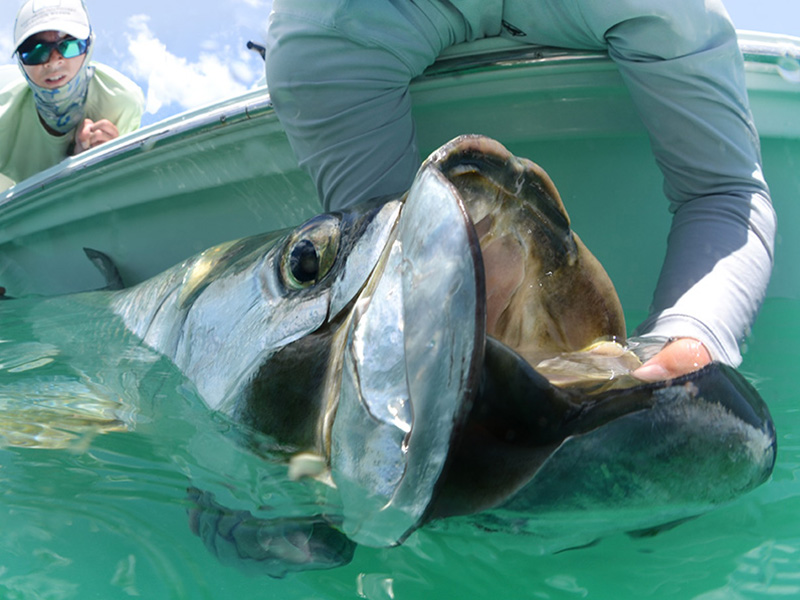

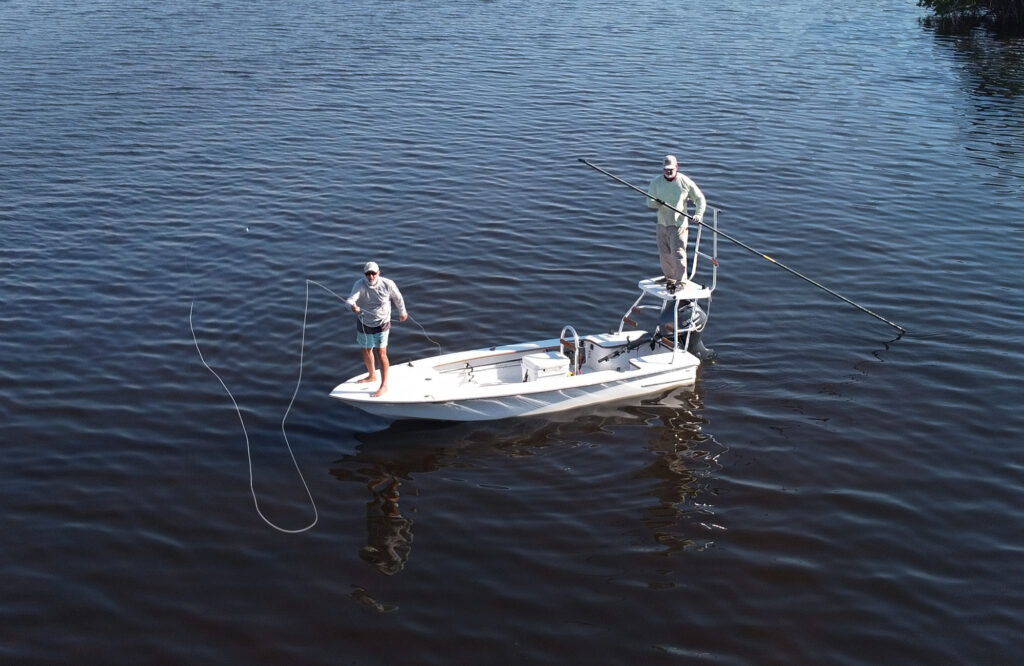
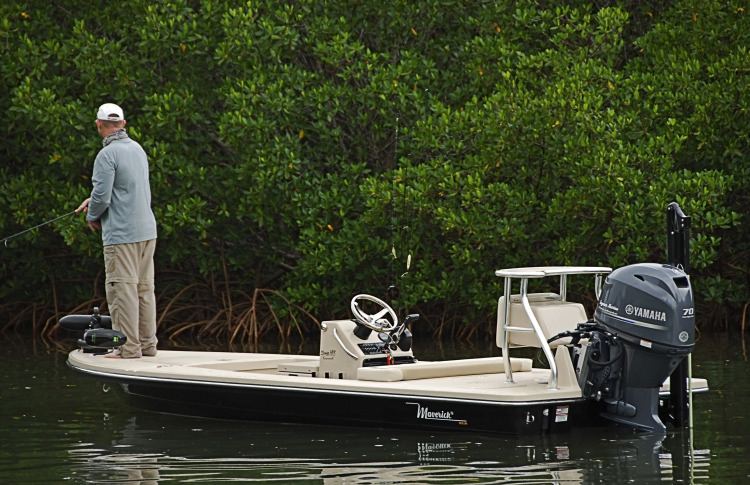
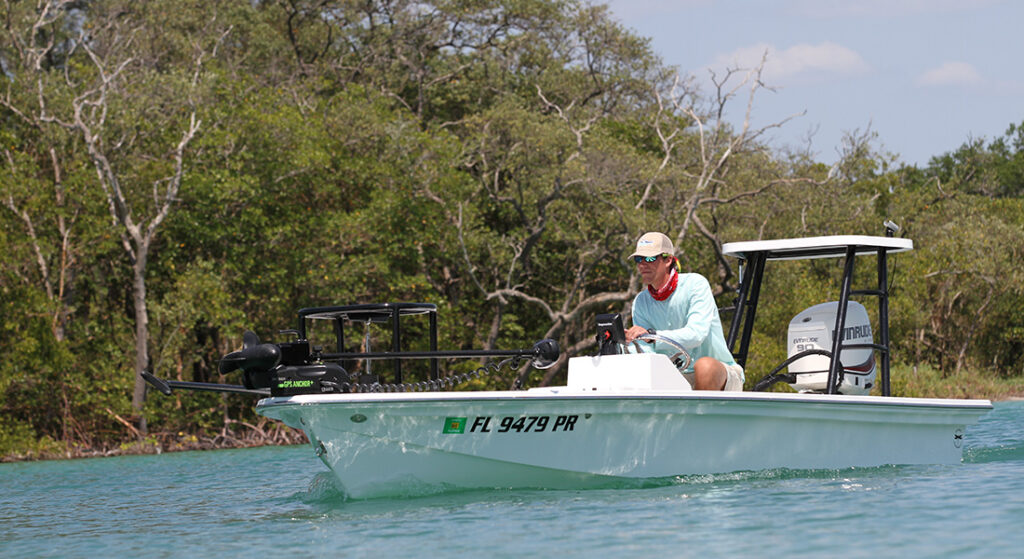
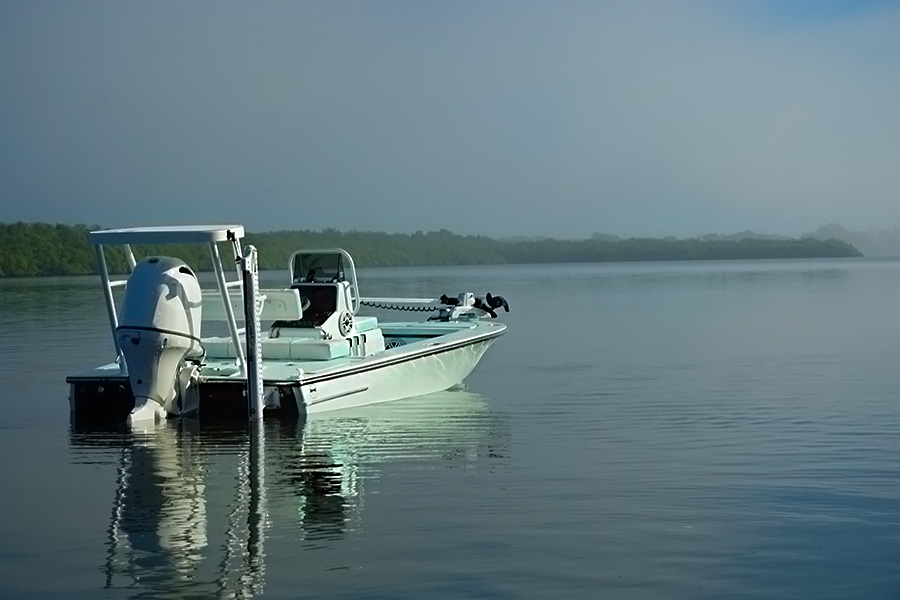
Fly Fishing Photography: Capture Stunning Moments on the Water
Fly fishing photography combines the beauty of nature with the excitement of fishing. Capturing these moments requires the right equipment and techniques. Whether you’re a beginner or a pro, this guide will help you take stunning fly fishing photos.
Essential Camera Equipment for Fly Fishing Photography
A DSLR or mirrorless camera provides the best image quality. These cameras offer manual settings for better control. Additionally, a waterproof camera is ideal for shooting in wet conditions. Compact action cameras like GoPros work well for close-up water shots. Furthermore, a telephoto lens captures distant casts and fights with fish. A wide-angle lens showcases landscapes and fishing action. Moreover, a polarizing filter reduces glare from water and enhances colors. In addition, a tripod or monopod keeps the camera steady for clear shots. Lastly, extra batteries and memory cards ensure you never miss a moment.
Best Camera Settings for Fly Fishing Photography
Use a fast shutter speed to freeze action and prevent blur. A lower ISO setting keeps image quality high in bright conditions. Additionally, adjusting aperture settings helps control depth of field. A wide aperture (low f-stop) blurs the background for subject focus. Conversely, a small aperture (high f-stop) keeps landscapes and anglers in focus. Moreover, using manual focus ensures sharp images in tricky lighting. Likewise, adjusting white balance based on lighting conditions helps maintain natural colors.
Lighting Tips for Fly Fishing Photography
Shoot during the golden hour for the best natural light. Early morning and late afternoon provide warm, soft light. In contrast, harsh midday sunlight creates strong shadows and glare. Additionally, using backlighting highlights water droplets and creates dramatic effects. Overcast days provide even lighting and reduce harsh shadows. Similarly, a reflector can also help bounce light onto the angler’s face. As a result, the subject appears more balanced and well-lit.
Composition Techniques for Captivating Fly Fishing Photos
Follow the rule of thirds to create balanced compositions. Placing the angler or fish off-center results in a more dynamic look. Additionally, capturing reflections on the water adds an artistic effect. Shooting from a low angle emphasizes the size of the fish. Furthermore, framing the angler with natural elements like trees or rocks enhances depth. Likewise, showing movement by including the fly line in mid-air creates excitement. Don’t forget to zoom in on details like flies, reels, and wet hands holding fish. Consequently, your images will tell a richer story.
Action Shots and Candid Moments in Fly Fishing Photography
Capture the cast to show the grace of fly fishing. Additionally, focus on the fight between angler and fish for excitement. Taking close-up shots of the fish just before release adds emotional impact. Snapping candid moments of laughter and joy on the water makes photos more engaging. Moreover, shooting water splashes and droplets creates dramatic effects. Likewise, using burst mode helps capture a sequence of movements. As a result, you can select the best frame later.
Post-Processing Tips for Stunning Fly Fishing Photos
Enhance colors and contrast using editing software. Additionally, adjusting brightness and shadows brings out better detail. Similarly, cropping images improves composition and removes distractions. Moreover, sharpening images highlights details in fish scales and water texture. Likewise, reducing noise ensures cleaner photos in low-light conditions. Consequently, the final image looks more polished and professional.
Conclusion
Fly fishing photography is a rewarding way to capture fishing adventures. The right equipment, settings, and techniques make all the difference. Additionally, experimenting with lighting, angles, and composition helps create stunning images. With practice and patience, your skills will improve over time. Ultimately, these tips will help you take breathtaking fly fishing photos that tell a compelling story. As a result, you can share your passion with others through captivating visuals.
I am a fly fishing Guide Located in Boca Grande Florida who loves to take photographs.
Thanks for taking the time to look at my photos.
